Lechon Kawali is a popular Filipino pork dish that is deep-fried to golden perfection. It is golden and crunchy on the outside and moist and flavorful inside, making it a tasty appetizer or main dish.
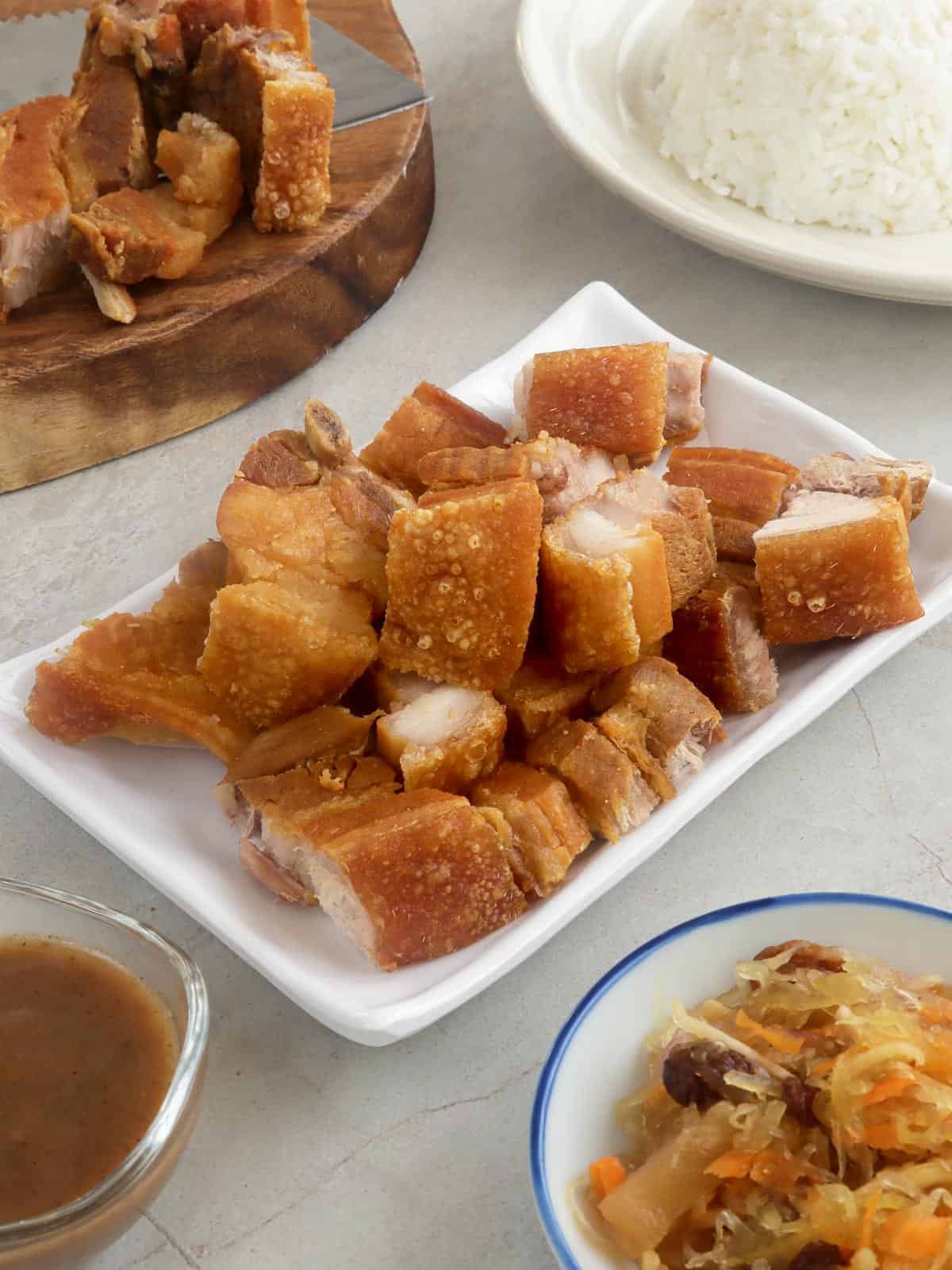
Call me cray cray. After discovering the crispiest rind and the moistest meat on a lechon sa hurno, you'd think I'd never cook lechon in a kawali again.
I mean, really. Who in her right mind would tackle hot oil splattering everywhere when she could have a slab of pork belly crisping nice and quiet in the oven?
In my defense, it was awfully hot this weekend, and I didn't want the oven on all day to cook one piece of pork. Besides, before the advent of lechon sa hurno in my life, I've been praised by my adoring fans (AKA daughter and partner-in-life) for the meanest, best-est lechon kawali ever.
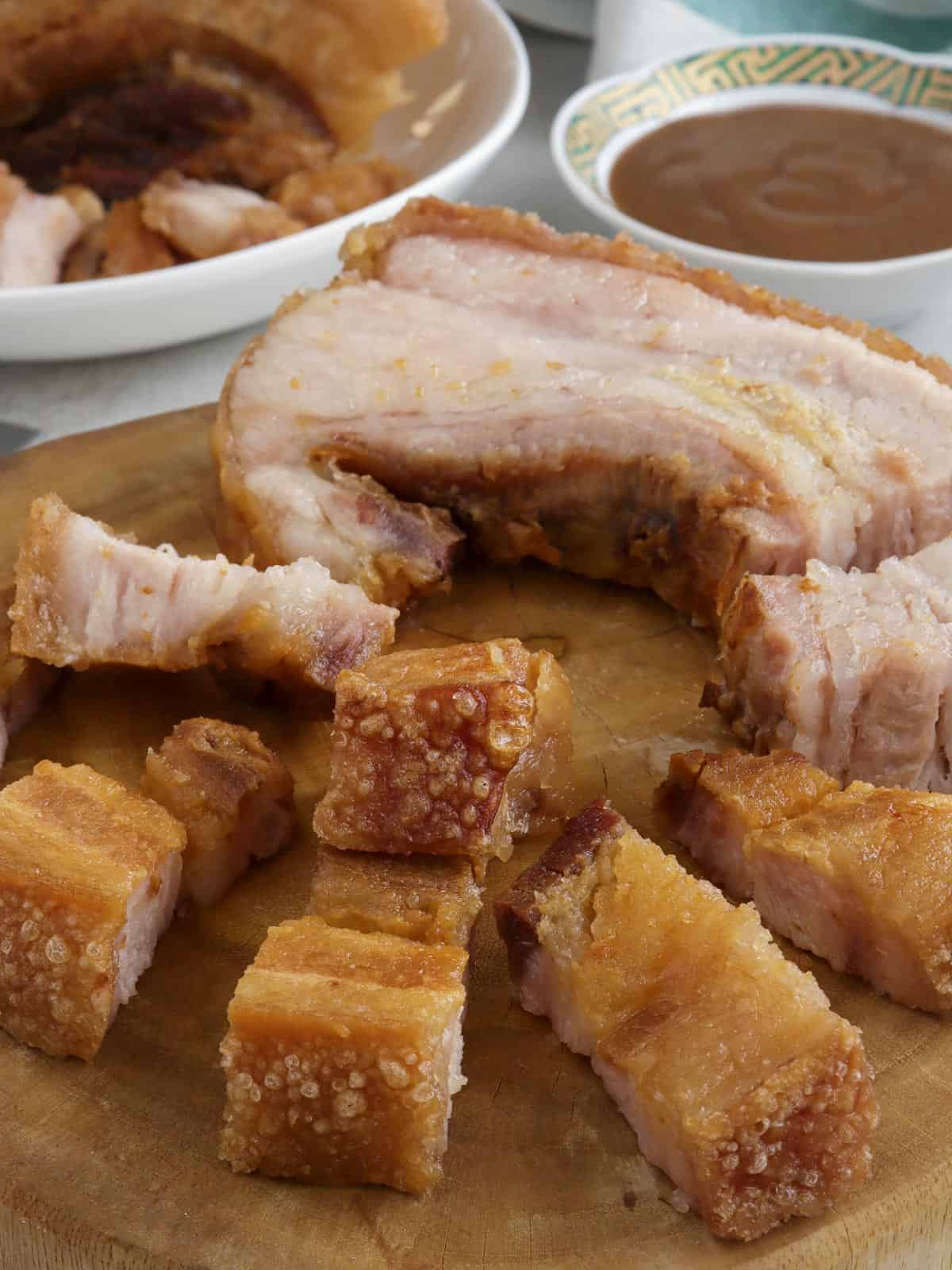
My friends, lechon kawali is not easy, and I implore you to practice caution. But believe me, every sinful morsel of this delectable meat is worth the effort.
See that blistered skin above? Boy, that golden piece of pork belly dream is nothing short of a masterpiece! A series of simple but important steps contribute to achieving that coveted crackling, so read on and learn the secrets. 🙂
Ingredient notes
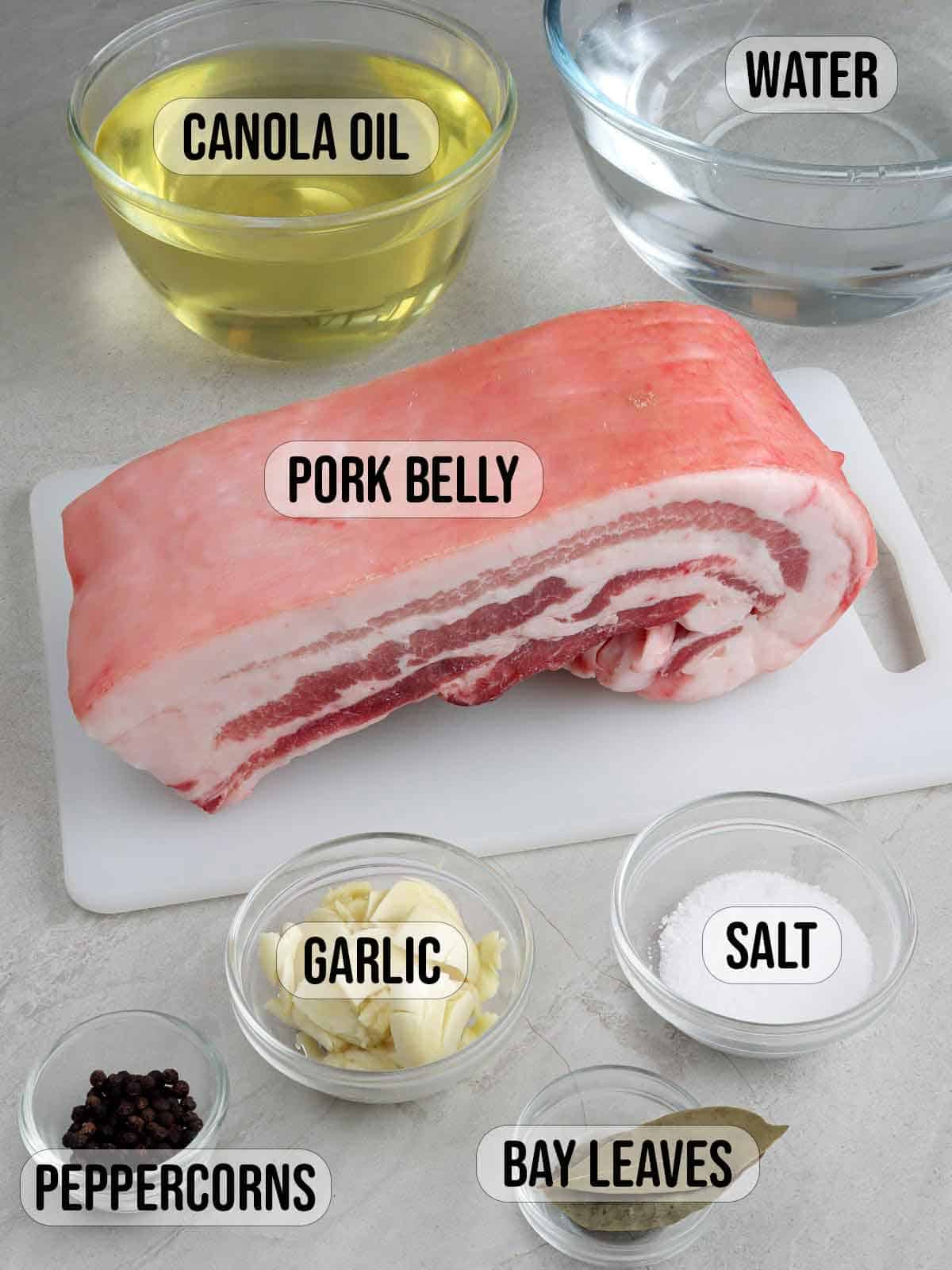
- Pork Belly- with or without ribs will work, but make sure to choose one with a nice cap of skin for the best results.
- Aromatics- When boiling the meat, I like to add crushed garlic cloves, bay leaves, salt, and peppercorns to infuse flavor.
- Vinegar- the acid helps draw out moisture from the skin for better crackling.
- Salt- adds flavor and draws out moisture for better crackling.
- Oil- using the right kind of oil is essential in deep-frying. Choose oils with a high smoke point, such as canola, grapeseed, safflower, peanut, or vegetable oil.
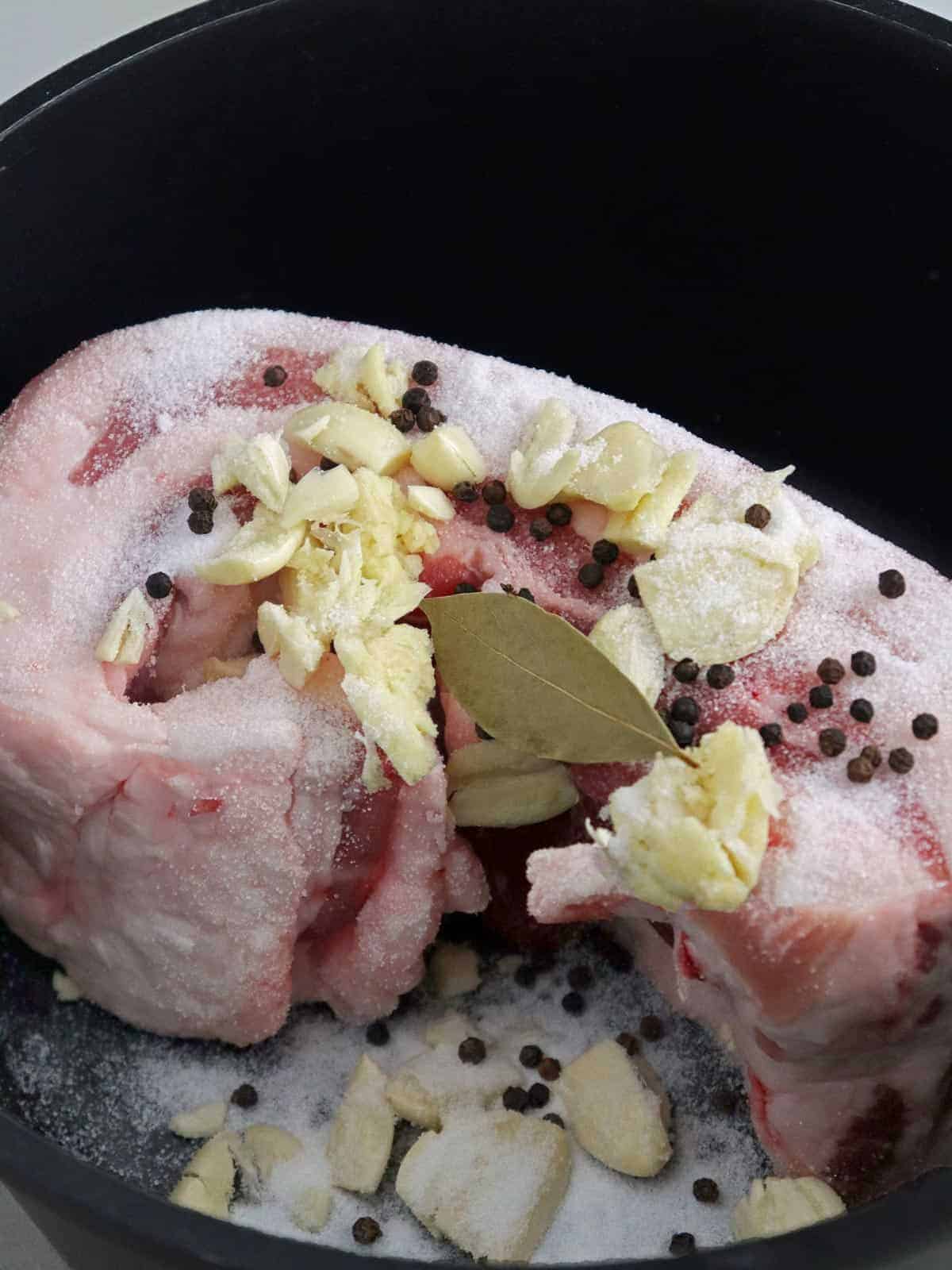
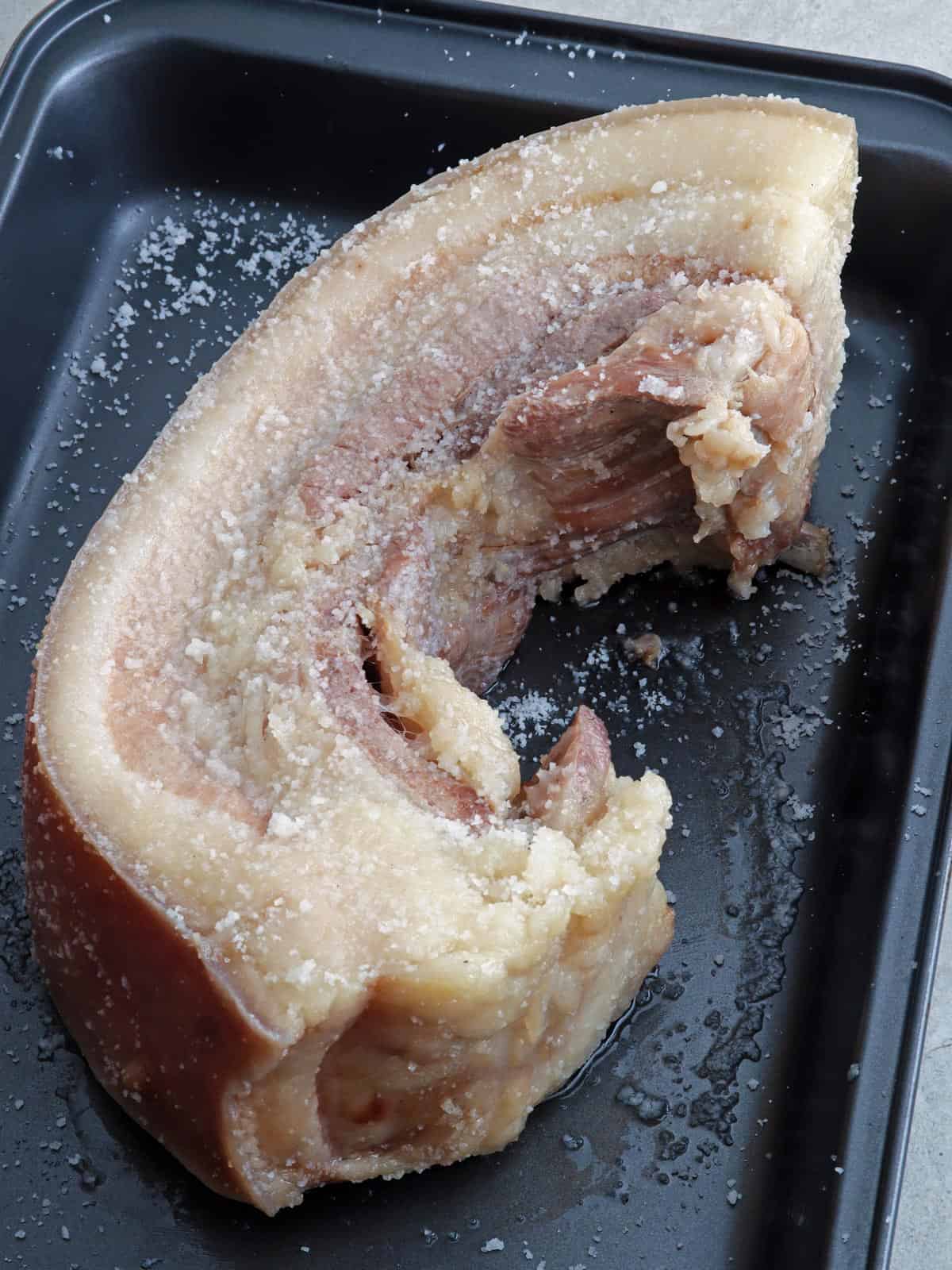
Cooking steps
- Boil the pork until fork-tender but not falling apart. This is to keep the meat moist and not dry and stringy. Remember, it will continue to cook during the deep-frying.
- Cool the cooked pork entirely and pat dry with paper towels.
- Score the skin using the tines of a fork or a knife, ensuring it does not pierce through the meat. Then, brush the skin with vinegar.
- Season the pork belly with salt and top the skin with a thin film of salt to draw out excess moisture.
- Place the pork belly skin side up on a wire rack and refrigerate overnight, uncovered, to chill and air-dry thoroughly.
- For best results, use enough oil to cover the pork belly during deep-frying and keep the temperature at an optimal 350 F to 375 F range.
- You can cut the slab into pieces to fry faster. I suggest cooking it whole to keep the meat moist longer.
- After frying, let it rest for about 3 to 5 minutes before chopping for the juices to redistribute.
Cooking tips
- If you're using bone-in, have the butcher partially cut through the ribs so the pork will be easier to chop once fried.
- You can replace part of the water with Sprite to add more flavor.
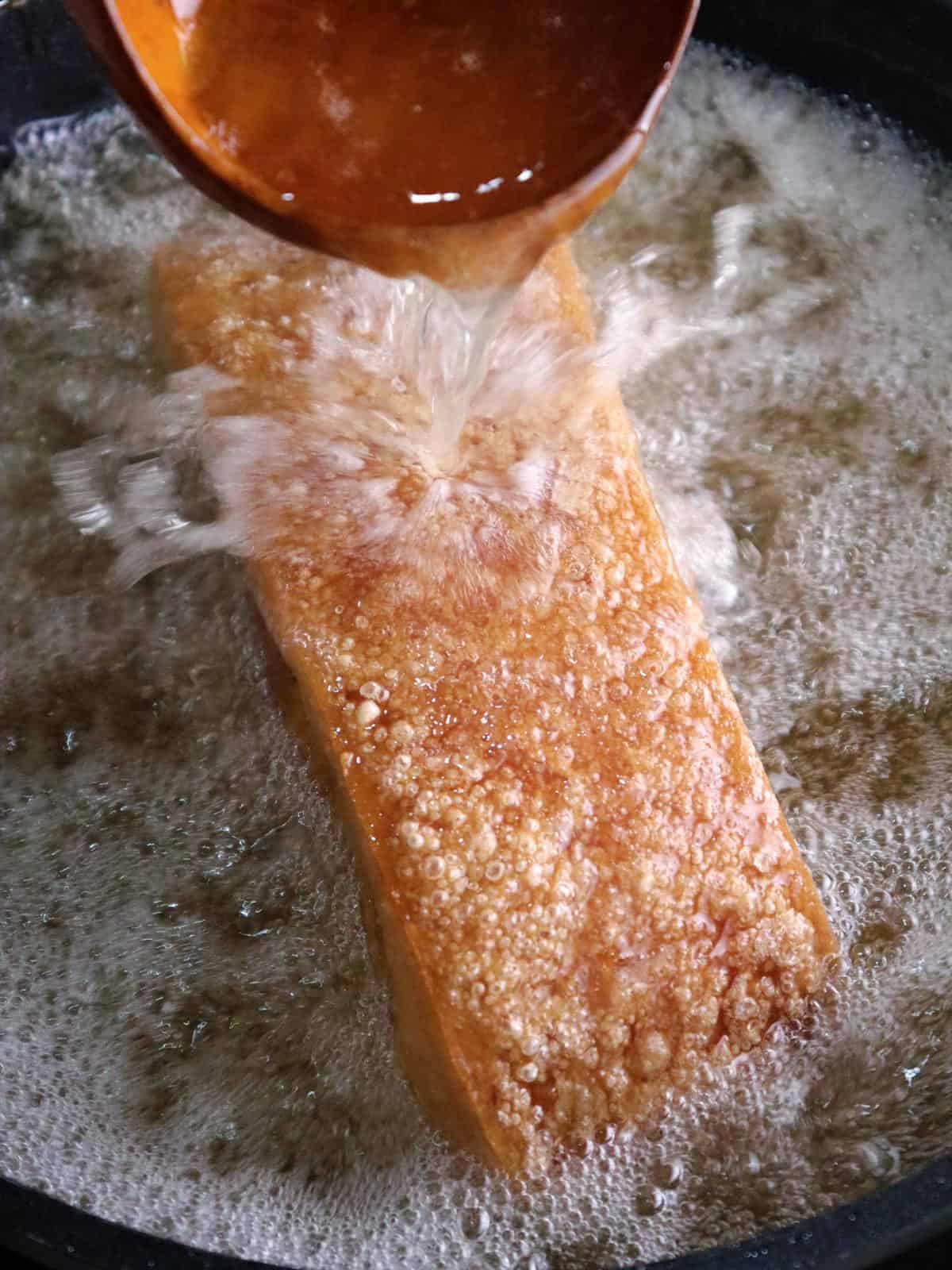
Safe practices
- For safety, use the right pot for the job! Make sure it is deep and large enough to hold the oil and the added volume of the meat without dangerous overflows and splashes.
- Have a splatter screen handy to protect yourself from oil splatters.
- To prevent wild splatters, dry the pork belly well.
- I was taught years ago to continuously sprinkle cold water in the sizzling hot oil while the meat was frying to promote crackling. This method is not for the faint of heart! Although the method works, I found from testing and retesting the recipe that it is unnecessary. Cooling and drying the pork well can achieve the same crunchy texture without the risk of painful splatters.
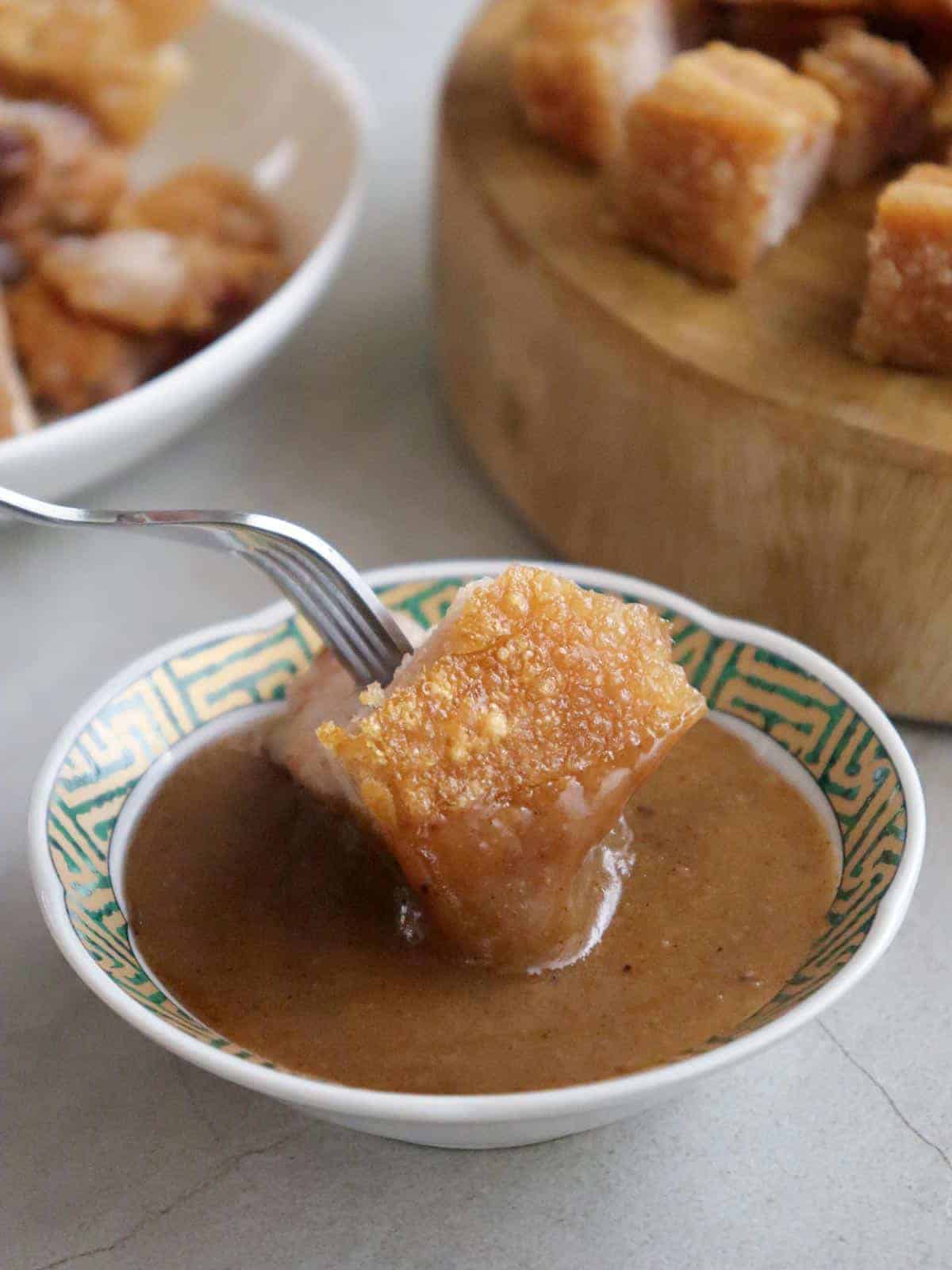
Condiments and dipping sauces
Lechon kawali is commonly served as an appetizer or main dish. It's best enjoyed with a choice of Filipino sawsawan like the following:
- Lechon Sarsa
- Spiced Vinegar (½ cup cane vinegar, one tablespoon soy sauce, one chopped shallot, two cloves minced garlic, two minced bird's eye chili peppers, salt, and freshly cracked pepper to taste)
- Banana Ketchup
- Sweet and sour sauce
- Atchara
Storage instructions
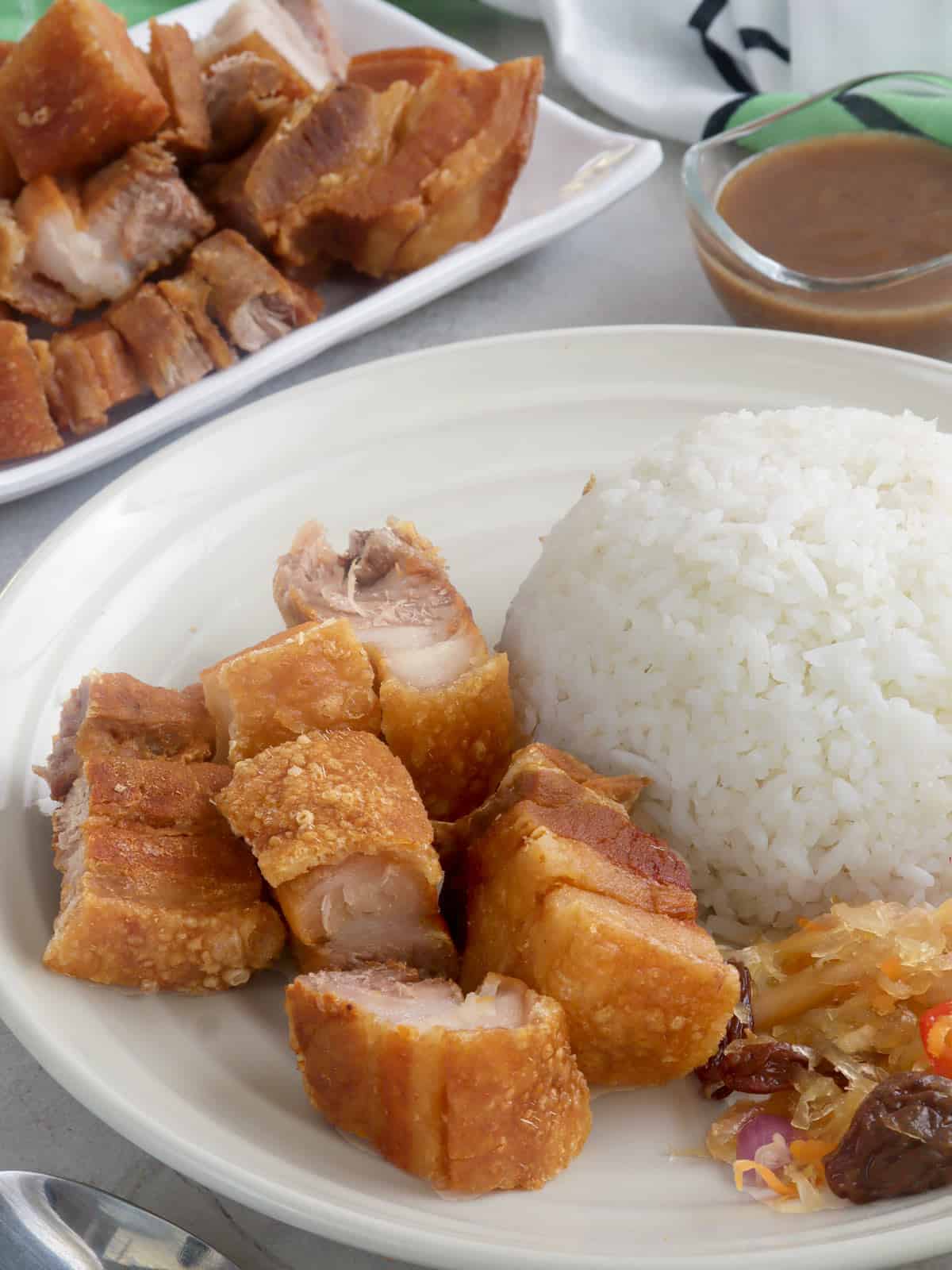
Like most fried foods, this crispy pork belly is most delicious when freshly cooked, as the skin loses its crunch over time. To extend crispness as long as possible, store any fried pieces uncovered.
For best results, fry just enough for a meal. Transfer the remaining boiled pork to a container with a tight-fitting lid and refrigerate for up to 3 days or freeze for up to 3 months. Thaw when ready to fry.
What to do with leftover Lechon
- Turn into crispy sisig or lechong paksiw
- Add to pinakbet or ginisang munggo.
- Use as topping for pancit palabok or pancit guisado
- Make into a crispy version of pork binagoongan or tokwa't baboy
More lechon recipes
Ingredients
- 4 pounds whole pork belly
- 1 head garlic, pounded
- 2 tablespoons salt
- 1 tablespoon peppercorns
- 2 bay leaves
- water
- canola oil
Instructions
- In a deep pot over medium heat, combine pork belly, garlic, salt, peppercorns, bay leaves, and enough water to cover.
- Bring to a boil, skimming scum that floats on top. Lower heat, cover, and continue to cook for about 1 to 1 ½ hours or until meat is fork-tender but not falling apart.
- Drain pork, discarding liquid. Wipe dry, removing any stray aromatics.
- Allow to cool to touch and pat dry with paper towels. Score the skin using the tines of a fork.
- Brush the skin with vinegar.
- Season the pork all over with salt and layer the skin with a thin film of salt.
- Place on a wire rack and refrigerate overnight to completely cool and dry. Remove from refrigerator and scrape off the salt.
- In a deep, heavy-bottomed pot, heat enough oil to completely cover meat to about 350 F to 375 F.
- Carefully place the meat in the hot oil and fry, turning as needed, until golden and skin is crisp and puffed.
- Remove meat from pot and drain on a wire rack set over a baking sheet. Let rest for about 5 minutes and cut into serving pieces.
- Serve with choice of dipping sauce.
Notes
- Have the butcher make a shallow cut through the rib bones to make chopping into serving pieces easier.
- Use enough oil to cover the pork belly during deep-frying, and keep the temperature at an optimal 350 F to 375 F range.
Video

Nutrition Information
“This website provides approximate nutrition information for convenience and as a courtesy only. Nutrition data is gathered primarily from the USDA Food Composition Database, whenever available, or otherwise other online calculators.”

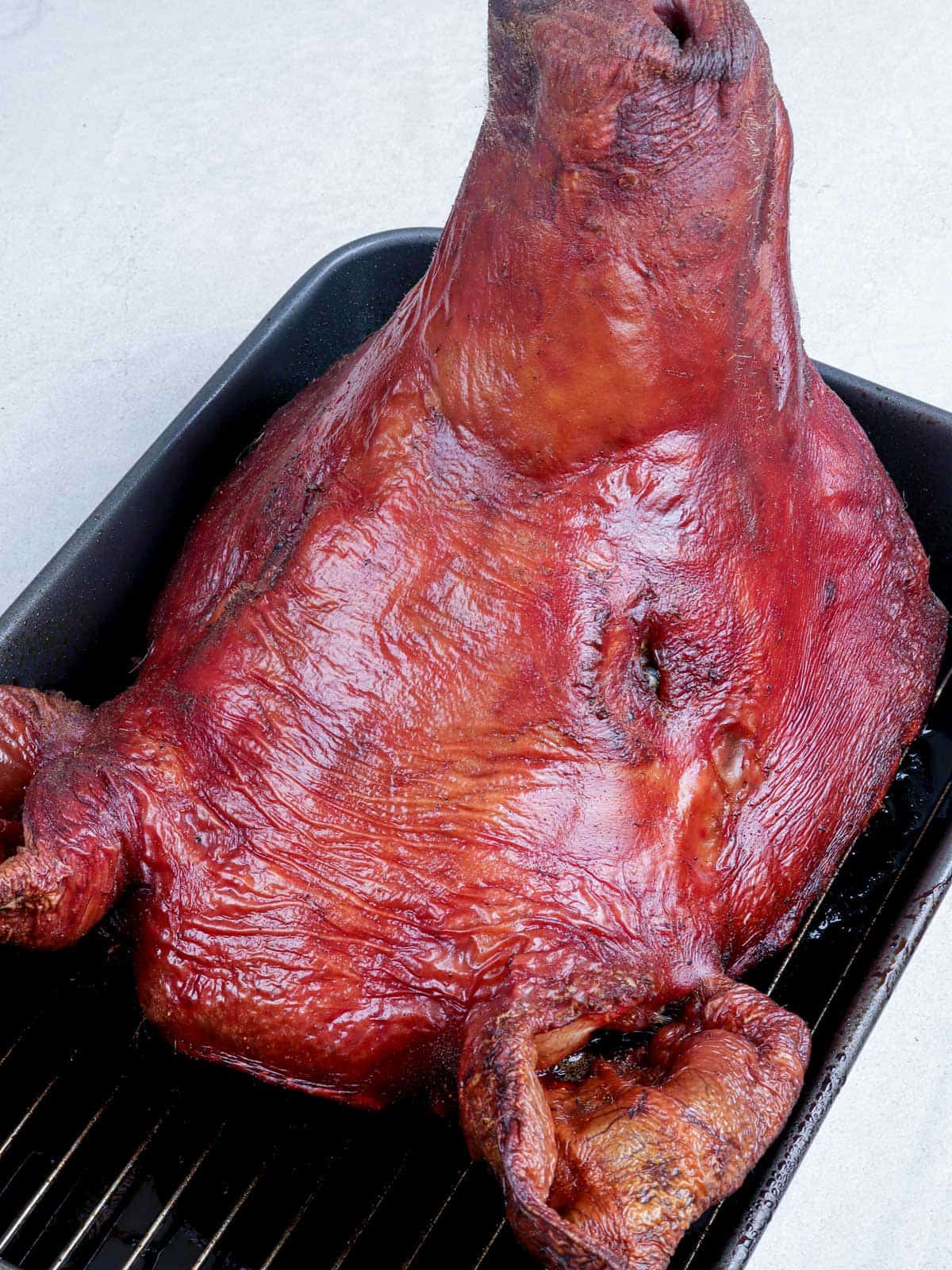
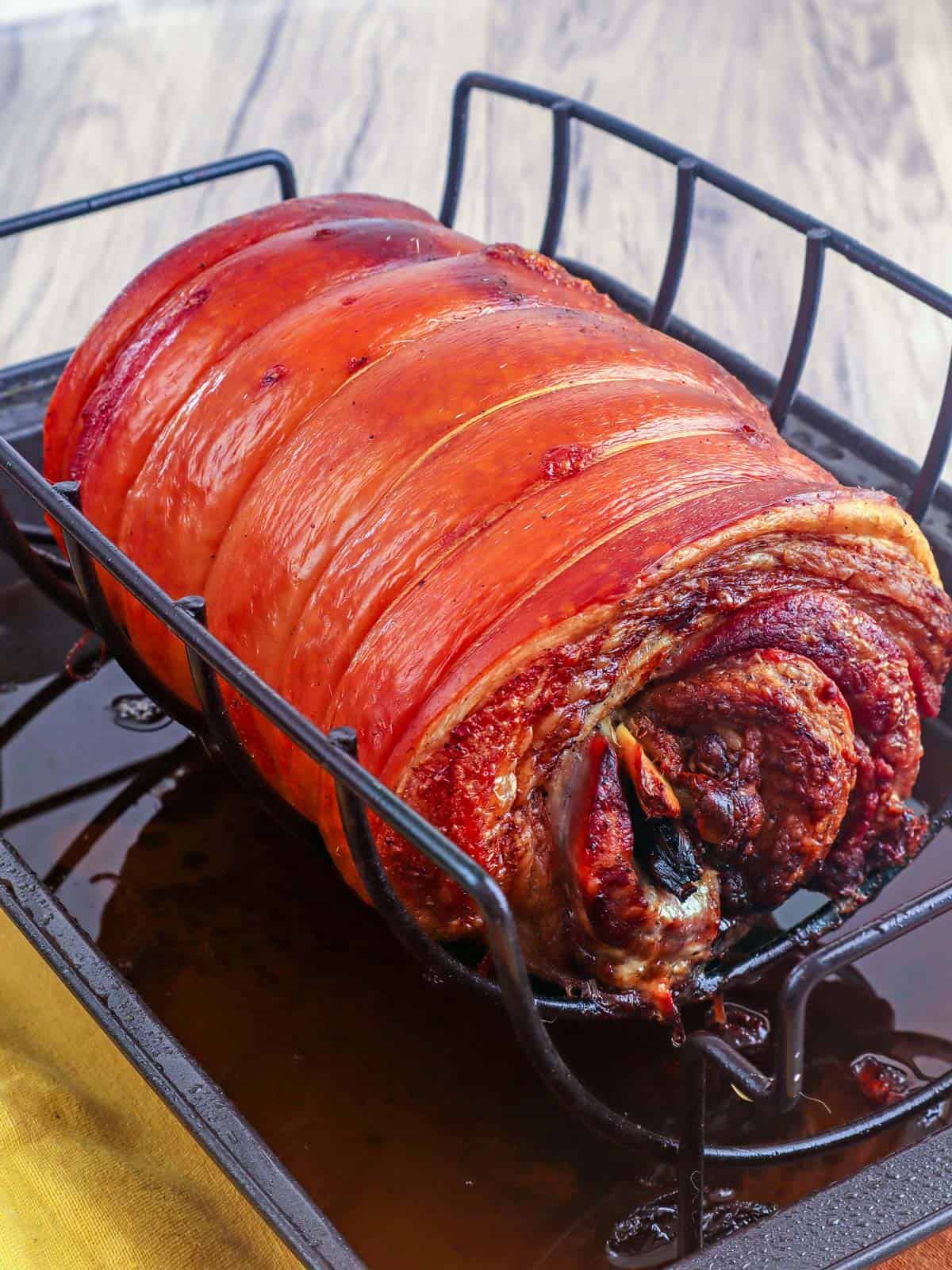
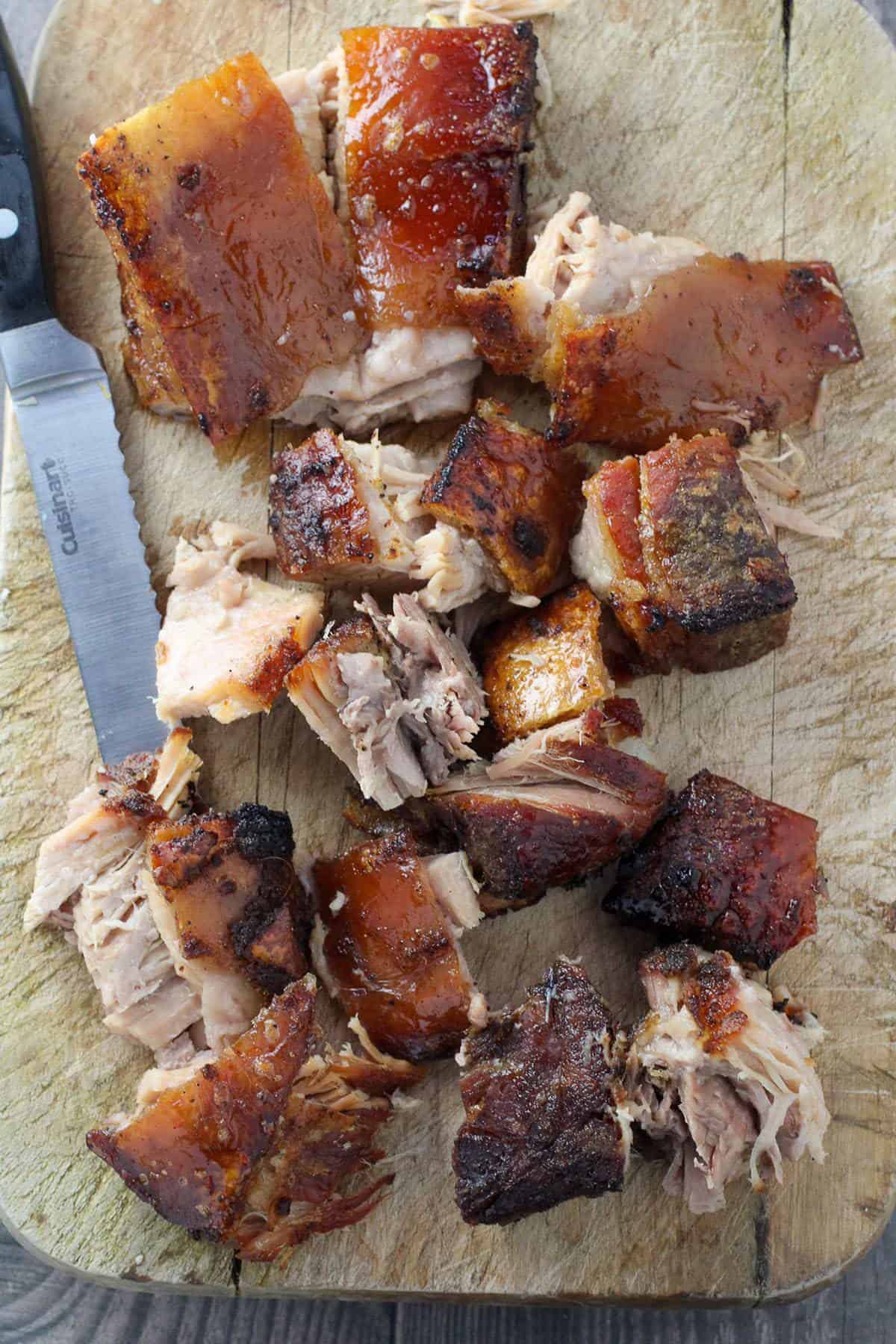
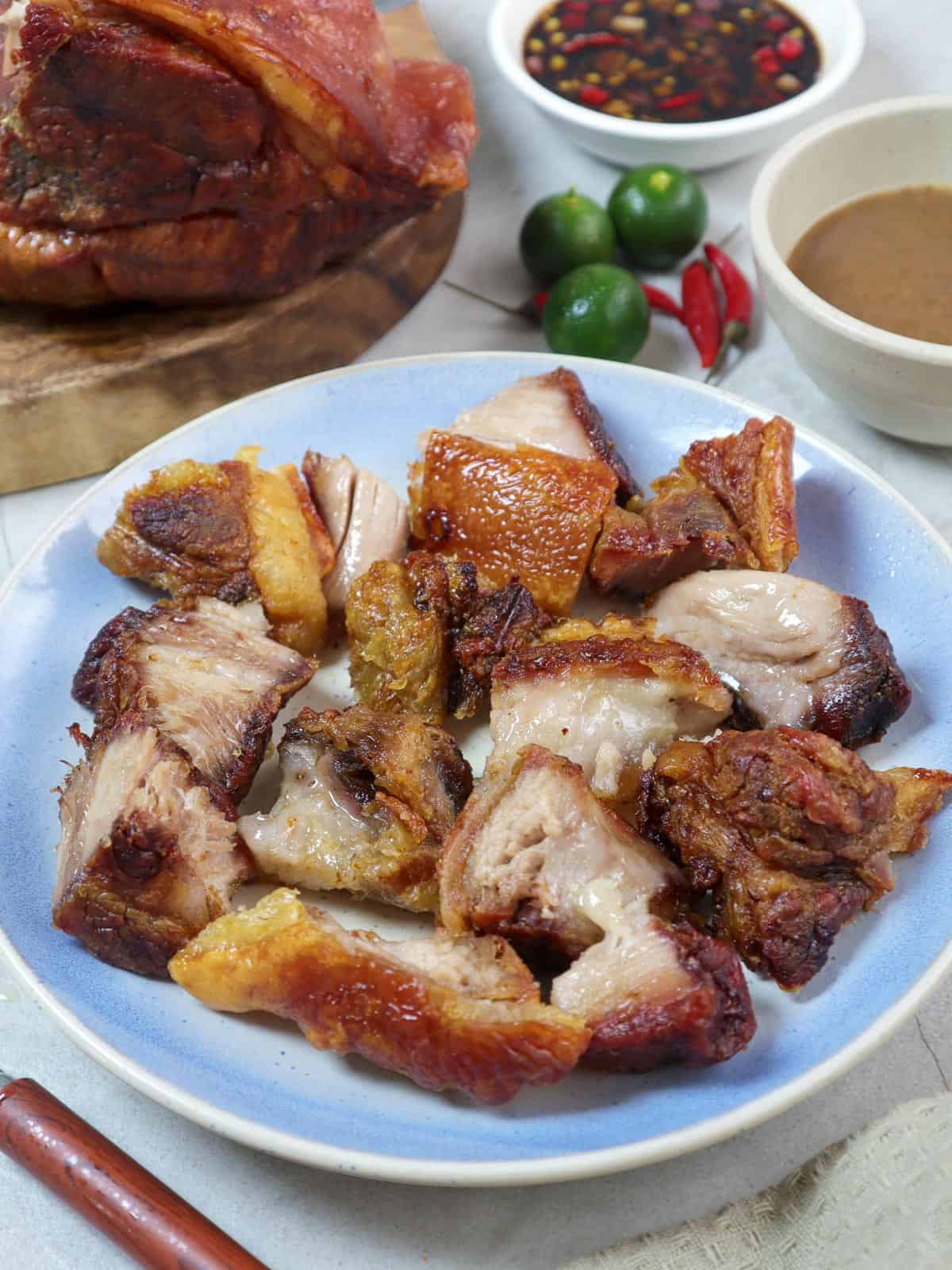
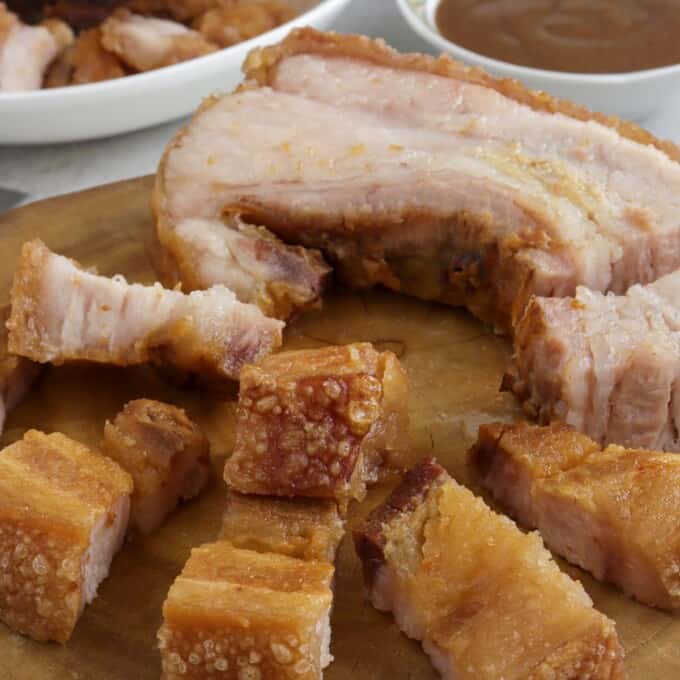
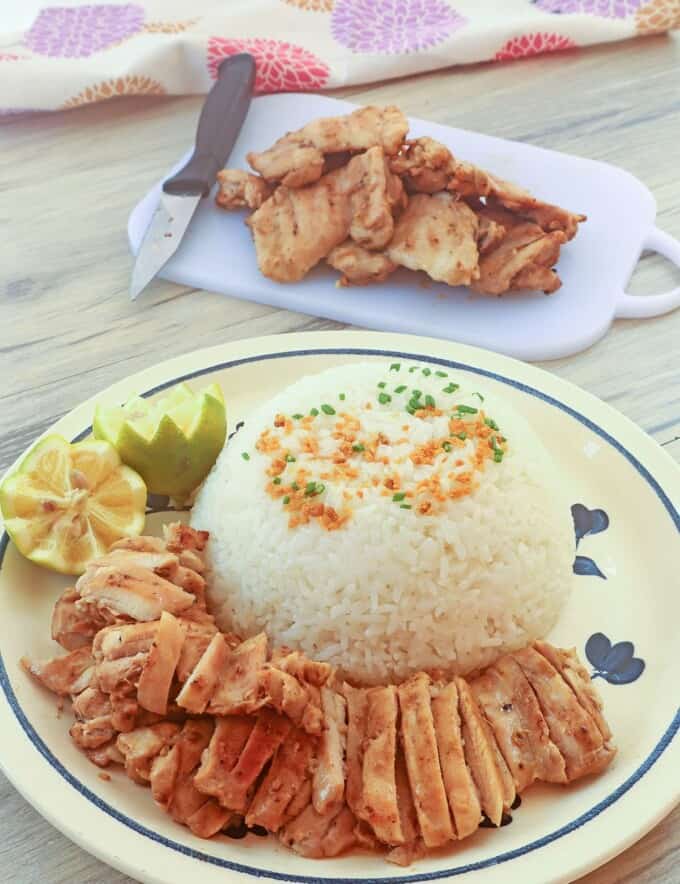

Sonia Aranez says
Can we use turbo broiler instead of deep frying? Would the skin be crunchy too? I’m scared of those oil oil splattering around when your deep frying the pork.
Lalaine Manalo says
Yes, you can use the turbo broiler or airfryer. I have the recipe coming up soon!
Grace says
I have heard about sprinkling the cold water really makes it more crunchy. Thank you for describing it in detail. It is a trade secret for those selling sitcharon. Thanks a lot for sharing.
Lalaine Manalo says
You're very welcome, Grace! 🙂
Lenirose Soriano says
Deep fry it twice. Let it cools down then deep fry again with the same oil used in the first deep frying.
Raquel says
What exactly do you mean by “deep fry it twice” ? Wouldn’t that be the same as deep frying it Only once, but just for a longer amount of time ?
Matt says
Do you have any idea how much I'd reduce the boiling time if I used a pressure cooker?
Lalaine Manalo says
Around 20 minutes should be enough to bring the pork belly to desired tenderness.
Paolo says
Do you immerse the pork in the hot oil skin-side up, or down? Do you flip it over? Thank you.
Lalaine says
Yes, I use enough oil to cover at least 3/4 of the pork belly. If you use enough to fully cover it, you don't really have to flip or turn it. 🙂
mobie john dakisay says
oh is that true?
Linda says
Im making it tomorrow night for special american friends na namiss ang pinas
Lalaine says
Enjoy 🙂
chinablue says
I love Lechon..thanks for sharing ; )
Mila says
I have a question, on the last method you have to sprinkle cold water on the pork and hot oil? What is the reason for that? Thanks in advance
Lalaine says
Hi Mila
This step creates the crackling on the skin making it crisp and crunchy 🙂
Ronald Cruz says
Hi, it would be necessary that it was refrigerated overnight? if so, then before putting it to frying pan it was frozen right? then is it ok when frying on that condition? just curious, anyway thanks for your help!
Lalaine says
It won't be frozen because it will be in the refrigerator only but it will be very cold. 🙂
Jamie says
I've been wanting to make this for my fiancé, who is pinay. I love it too. I've only had it in the Philippines but want to try it at home. When you fry the belly, can it be done in a deep fryer like you would use to make French fries? If so; what temp should I be looking for? And about how long should I expect the belly to fry before its done? I was looking at some recipes and they were saying it could take 40 minutes of frying. That seemed kinda long to me. I wanted to ask someone who knows to be sure ? Thanks!
Lalaine says
Hello Jamie
Yes, a deep fryer (the electric kind right?) would work as long as it is big enough to accommodate the whole slab. The meat should be completely submerged in oil. 350 F would be optimal for deep frying and as the meat is pre-cooked, I am estimating 20 to 25 minutes enough time for frying to a crisp.
Ben Cruz says
I've been able to find boneless pork belly at two butchers in my area but they are charging $6.99 / lb. Please comment about prices you are experiencing so I can decide if I need to look for other butchers. Also, is bone-in more affordable?
Lalaine says
Hi Ben
Pork belly are usually about $4.99 to $5.99 a pound in the Seafood City in my area. One reasonably sized slab runs about $10. I actually prefer bone-in for lechon kawali and their price is just about the same as boneless.
Bud says
I pay $2.99/lb with ribs attached or $3.99/lb boneless pork belly with skin.
Lalaine says
Hello Bud
Seafood City do sell pork belly at around $3. 🙂
CrystalAS says
Thank you for your wonderful recipe and "cold water sprinkle" tip, Lalaine! I normally roast my liempo to crispy perfection in my convection (microwave) oven but since I got a new one (where the highest possible temperature is only 220C), I decided to fry it instead! This is my first time to deep-fry anything and, except for the pork skin sticking a bit on the bottom of my (non-Teflon coated) pot, this was a success! (Perhaps you can recommend a specific type of pot to use?) Sure it was oilier than it should have been had I oven-roasted it but crunchy and flavorful nonetheless! Putok ang balat sa deep frying but oh-so juicy inside! Warm Filipino Christmas greetings from The Netherlands!
Lalaine says
Hi Crystal
I use a kawali (the kind we have in the Philippines) for most of my cooking and it has served me well whether deep-frying, stir-fry etc. 🙂
I am glad you enjoyed your lechon kawali. Happy holidays to you and your family!
MG says
Hi. I'm just curious. What's the reason for sprinkling water while frying?
Lalaine says
Hi MG
The sprinkling of water while frying helps puff and blister the skin. 🙂
Camille says
My favorite! It's been awhile since I've had lechon-kawali and now I am totally craving it.
Mia S says
My, I am drooling! Quick question, can I use pork belly without bones for this one? I would love to try making this any time soon.
Lalaine says
Hello Mia
Yes, pork belly with the bones is ok, mas gusto ko lang kasi dahil I enjoy gnawing on the bones for those stray meat bits and pieces 🙂
Mia S says
Oh thanks, I am making this tomorrow...(drooling more!)
charming says
Oh, gracious Lord! Was about to request for this recipe coz my daughter requested it for her Oct 29 birthday. Boy, am I lucky! Can't wait to try this....it's gonna be a 'yummy crunch-crunch!' 🙂
Lalaine says
Give it a try, Charming. Sooo good!